DTF-Druck, Abkürzung für Direct to Film Printing, ist eine revolutionäre Druckmethode, die es ermöglicht, hochwertige und lebendige Designs direkt auf Stoffe zu übertragen. Diese relativ neue Technik erfreut sich in der Modewelt großer Beliebtheit, Bekleidung, und kundenspezifische Warenindustrien.

Es bietet zahlreiche Vorteile wie eine hervorragende Druckqualität, Vielseitigkeit in der Stoffkompatibilität, und Kosteneffizienz. In diesem Artikel, Wir werden die Besonderheiten erkunden DTF-Transferdruck, einschließlich der Funktionsweise, seine Anwendungen, Vorteile, und Überlegungen zur Umsetzung.
Zusätzlich, Wir werden diese Druckmethode mit anderen gängigen vergleichen Druckmethoden, Besprechen Sie die Herausforderungen und Grenzen, und einen Einblick in ihre Zukunftsaussichten als sich entwickelnde Technologie geben.
DTF-Druck erklärt | Enthüllung der Welt des Direktdrucks auf Film
Was ist DTF-Druck??
So, you’;Ich frage mich wahrscheinlich, was zum Teufel Direct To Film Printing ist (DTF) Ist.
Brunnen, Lassen Sie mich es für Sie aufschlüsseln. DTF stands for “;Direkt zum Film,”; and it’;Es handelt sich um eine Drucktechnik, mit der Sie Designs problemlos auf verschiedene Stoffe übertragen können.
Forget the days of struggling with heat presses and messy inks –; Dieser Druck ist hier, um den Tag zu retten!
Geschichte des DTF-Drucks
Jetzt, let’;Machen wir einen kurzen Ausflug in die Vergangenheit und erkunden Sie den Ursprung dieses Drucks. Diese innovative Methode entstand erstmals Anfang der 2000er Jahre, erfreut sich zunehmender Beliebtheit in der Mode- und Textilindustrie.
Alles begann mit der Entwicklung spezieller Folien, die bedruckt und dann mit einer Heißpresse auf Stoffe übertragen werden konnten. Über die Jahre, es hat sich weiterentwickelt und verbessert, Für viele Unternehmen und Privatpersonen, die ihre Designs zum Leben erwecken möchten, wird es zur ersten Wahl.
Wie funktioniert der DTF-Druck??
Direkt zum Film (DTF) Drucken ist ein hochmodernes Textildruckverfahren, das eine vielseitige und effiziente Alternative zu herkömmlichen Drucktechniken bietet.
Schritt-für-Schritt-Anleitung für den Direktdruck auf Film (DTF)
Okay, let’;Kommen wir nun zu den Einzelheiten, wie dieser Druckvorgang tatsächlich funktioniert. Machen Sie sich bereit, because it’;Es wird dich gleich umhauen.

Durch die Hitze schmilzt die Klebeschicht, damit es sich mit dem Stoff verbinden kann, während die Tinte von der Folie auf den Stoff übertragen wird, Erstellen eines lebendigen und langlebigen Drucks. It’;Es ist wie Magie, aber ohne dass ein Zauberstab nötig ist.
Schlüsselkomponenten des DTF-Drucks
Jetzt, Sie fragen sich vielleicht, was die Superhelden hinter diesem Druck sind. Brunnen, Zu den Schlüsselkomponenten gehört eine DTF-Druckmaschine (offensichtlich), spezialisierter DTF-Film, eine Heißpresse, und ein Klebepulver.
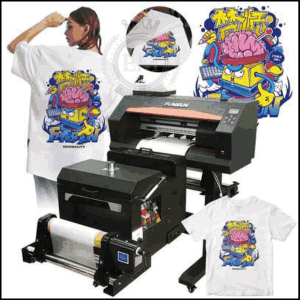
Diese Komponenten arbeiten harmonisch zusammen und geben Ihnen die Möglichkeit, atemberaubende Drucke auf einer Vielzahl von Stoffen zu erstellen. It’;Es ist wie ein gut choreografierter Tanz, aber ohne die Notwendigkeit einer ausgefallenen Beinarbeit.
Vorteile des DTF-Drucks
Direkt zum Film (DTF) Drucken stellt einen revolutionären Ansatz in der Textildruckindustrie dar, Dies bringt zahlreiche Vorteile mit sich, die sowohl die Qualität als auch die Effizienz des Stoffdrucks verbessern.
Hohe Druckqualität und Lebendigkeit
Einer der größten Vorteile des Direktdrucks auf Film (DTF) ist die außergewöhnliche Druckqualität, die es liefert. Die Farben sind lebendig, die Details sind scharf, Und die Drucke halten unzähligen Wäschen stand, ohne auszubleichen wie in Ihren Kindheitsträumen.
Say goodbye to dull and lackluster prints –; Es ist hier, um Ihre Designs hervorzuheben!
Vielseitigkeit und Kompatibilität mit verschiedenen Stoffen
It isn’;Ich bin nicht wählerisch, wenn es um Stoffe geht. Es spielt sich gut mit Baumwolle ab, Polyester, Mischungen, und sogar dehnbare Materialien.
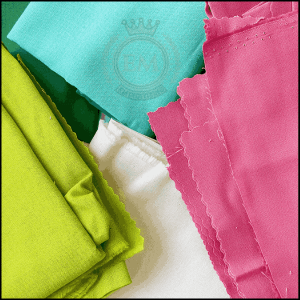
Whether you’;betreffend Bedrucken von T-Shirts, Hoodies, oder Yogahosen, es hält dir den Rücken frei. It’;s like having a reliable best friend who’;Ich bin immer für ein Abenteuer zu haben.
Kosten- und Zeiteffizienz
Zeit ist Geld, mein Freund, und Direktdruck auf Film (DTF) versteht das. Im Gegensatz zu anderen Druckmethoden, DTF doesn’;Es erfordert keine übermäßige Einrichtungs- oder Reinigungszeit.
Plus, Sie können mehrere Designs in einem einzigen Stapel drucken, Sie sparen wertvolle Zeit und senken die Produktionskosten. It’;s like having a personal assistant who’;Es ist sowohl effizient als auch kostengünstig.
Zu berücksichtigende Faktoren bei der Implementierung des DTF-Drucks
Bei der Implementierung von Direct to Film (DTF) Drucken, Für einen erfolgreichen und effizienten Betrieb sollten mehrere Schlüsselfaktoren berücksichtigt werden.
Investitions- und Ausrüstungsanforderungen
Bereit, in die Welt des Direktdrucks auf Film einzutauchen (DTF)?
Zunächst sind einige Dinge zu beachten. Während dieses DTF T-Shirt-Druck kann auf lange Sicht eine kostengünstige Option sein, es erfordert eine Anfangsinvestition in die Ausrüstung, wie zum Beispiel einen Drucker, Hitzepresse, und DTF-Film.

Stellen Sie also sicher, dass Sie diese Zahlen kennen, bevor Sie den Sprung wagen.
Ihr Bankkonto wird es Ihnen danken!
Vorbereitung und Vorbehandlung von Stoffen
Bevor Sie mit dem Drucken dieser fantastischen Designs beginnen können, you’;Sie müssen Ihre Stoffe vorbereiten. Dabei wird in der Regel eine Vorbehandlungslösung aufgetragen, um sicherzustellen, dass die Tinte richtig haftet.
Stellen Sie sich das so vor, als würde man eine Leinwand vor dem Malen grundieren. It’;Dies ist ein entscheidender Schritt, um die bestmögliche Druckqualität sicherzustellen.
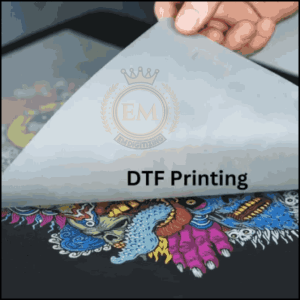
So don’;Ich überspringe es nicht, unless you want your designs to look like a preschooler’;s Fingermalerei (no judgment if that’;s the look you’;Ich werde loslegen!).
Informationen zu Tinten- und Verbrauchsmaterialoptionen
Tinte spielt bei diesem Druck eine entscheidende Rolle, so it’;Es ist wichtig, Ihre Optionen zu verstehen. Es stehen verschiedene Arten von Tinten zur Verfügung, und jedes hat seine eigenen einzigartigen Eigenschaften.
Einige sind lebendiger, während andere besser für bestimmte Stoffe geeignet sind. Recherchieren Sie also, experimentiere ein wenig, und finden Sie die Tinte, die Ihren Anforderungen am besten entspricht.
It’;Es ist, als würde man den perfekten Lippenstiftton finden – er kann den entscheidenden Unterschied machen!
Herausforderungen und Einschränkungen des DTF-Drucks
Während Direct to Film (DTF) Der Druck bietet erhebliche Vorteile bei der Textilindividualisierung, Es bringt auch seine eigenen Herausforderungen und Einschränkungen mit sich.
Komplexität des Farbmanagements
Dies bietet zwar lebendige Farben, Erzielung konsistenter und genaue Farbe Die Reproduktion kann manchmal eine Herausforderung sein. It’;s like trying to paint a masterpiece with a box of crayons – you might not always get the exact shade you’;wieder anstreben.
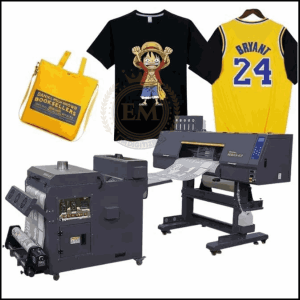
Seien Sie also bereit, zu experimentieren und Ihre Farbmanagementfähigkeiten zu verfeinern, um die besten Ergebnisse zu erzielen.
Einschränkungen bei Designdetails und Bildgröße
Dabei können atemberaubende Designs entstehen, Es hat seine Grenzen, wenn es um Kleinigkeiten geht, komplizierte Details und große Bildgrößen.
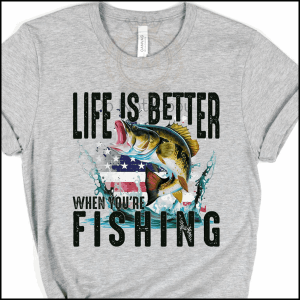
Think of it like trying to fit a majestic unicorn on a postage stamp – it’;Es wird einfach nicht funktionieren.
Berücksichtigen Sie dies also bei der Planung Ihrer Designs und wählen Sie Bilder aus, die im Direct-To-Film-Druck wirklich zur Geltung kommen (DTF) Verfahren.
Umwelterwägungen
zuletzt, let’;Reden wir über die Umwelt. Dieser DTF-Druck, wie jede Druckmethode, hat seine Auswirkungen auf die Umwelt. Die Verwendung von Tinten und Verbrauchsmaterialien kann zu Abfall und Umweltverschmutzung führen, wenn sie nicht ordnungsgemäß gehandhabt wird.
Seien Sie also aufmerksam bei Ihren Praktiken, Entscheiden Sie sich nach Möglichkeit für umweltfreundliche Optionen, und tragen Sie Ihren Teil dazu bei, Mutter Erde glücklich zu machen. She’;Ich werde es zu schätzen wissen, und das gilt auch für zukünftige Generationen von Fashionistas.
Fazit
So, there you have it –; ein Crashkurs in die wunderbare Welt des DTF-Drucks. It’;Es ist vielseitig, effizient, und produziert hochwertige Drucke, die Sie umhauen werden (unless you’;Socken neu drucken, Natürlich).
Whether you’;Ich bin ein Modeliebhaber, ein Geschäftsinhaber, oder jemand, der seinen Sachen einfach eine persönliche Note verleihen möchte, Direkter Filmdruck (DTF) ist auf jeden Fall einen Versuch wert.
Machen Sie sich bereit, sich selbst und andere mit Ihren neu entdeckten Druckfähigkeiten zu beeindrucken!
EMdigitalisieren: Experte für die Digitalisierung von Stickereien zu Ihren Diensten
Wenn Sie an einem Stickprojekt jeglicher Art interessiert sind, Dann ist EMdigitizing die beste Option für Sie. Wir bieten Stickerei digitalisieren und Vektorkunstdienste mit einer schnellen Bearbeitungszeit. Sie können auch unsere Website besuchen und sich über unsere besten Dienstleistungen informieren.
Wir bieten auch ein tolles 50% Rabatt auf alle unsere Dienstleistungen für unsere angesehenen Erstkunden. Wir bieten auch an kostenlose Angebote in gerade erzeugt 5 Protokoll.
Sie sollten sich dieses zeitlich begrenzte Angebot schnappen und annehmen Ihr Stickprojekt Mit EMdigitizing auf das nächste Level.
Wenn Sie Fragen zu diesem Thema haben, du kannst sie fragen. Vielen Dank, dass Sie sich die Zeit genommen haben, diesen Artikel zu lesen.
Häufig gestellte Fragen:
Direkt zum Film (DTF) Der Druck ist für seine Haltbarkeit und Waschbeständigkeit bekannt, Bei richtiger Pflege hält es oft so lange wie das Kleidungsstück selbst.
DTF hat im Hinblick auf die Vielseitigkeit Vorteile gegenüber der Sublimation, da es auf einer größeren Auswahl an Stoffen und Farben drucken kann, Bei bestimmten Materialien wie Polyester könnte die Sublimation jedoch bessere Ergebnisse liefern.
Ein Hauptnachteil von DTF-Druckern sind die anfänglichen Einrichtungskosten, Dies kann höher sein als bei anderen Druckmethoden, und sie erfordern spezielle Verbrauchsmaterialien wie DTF-Tinten und -Filme.
DTF kann bei kleinen bis mittleren Auflagen aufgrund geringerer Einrichtungskosten und weniger arbeitsintensiver Prozesse kostengünstiger sein als Siebdruck, aber für große Mengen, Siebdruck kann wirtschaftlicher sein.
